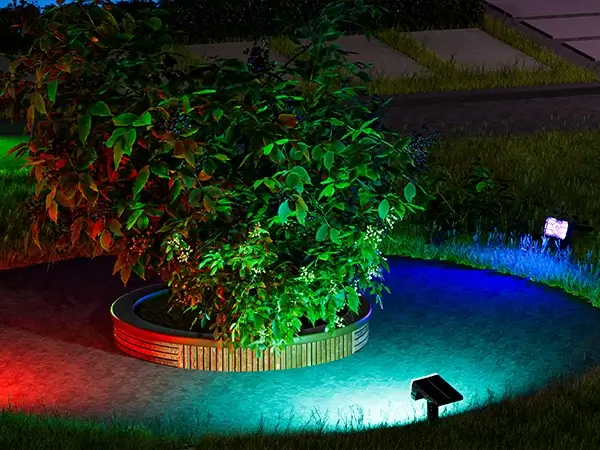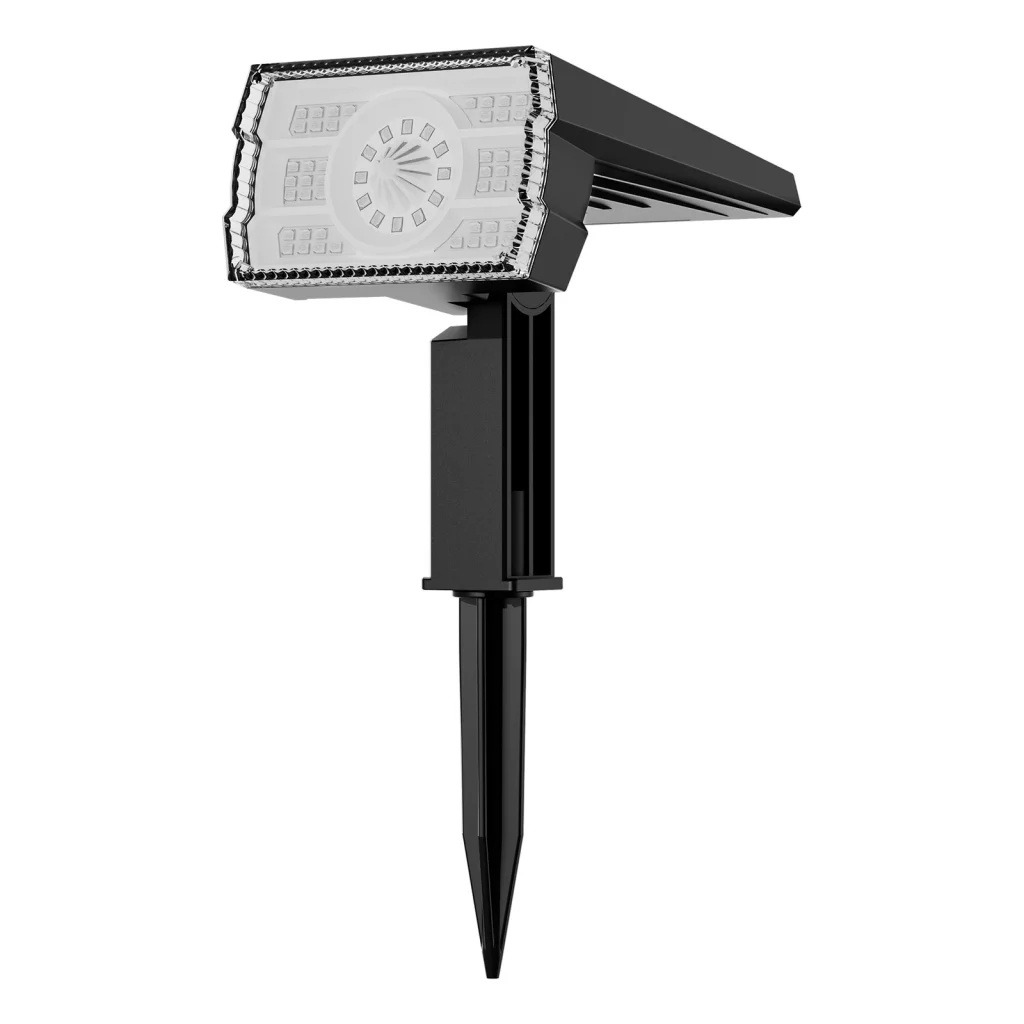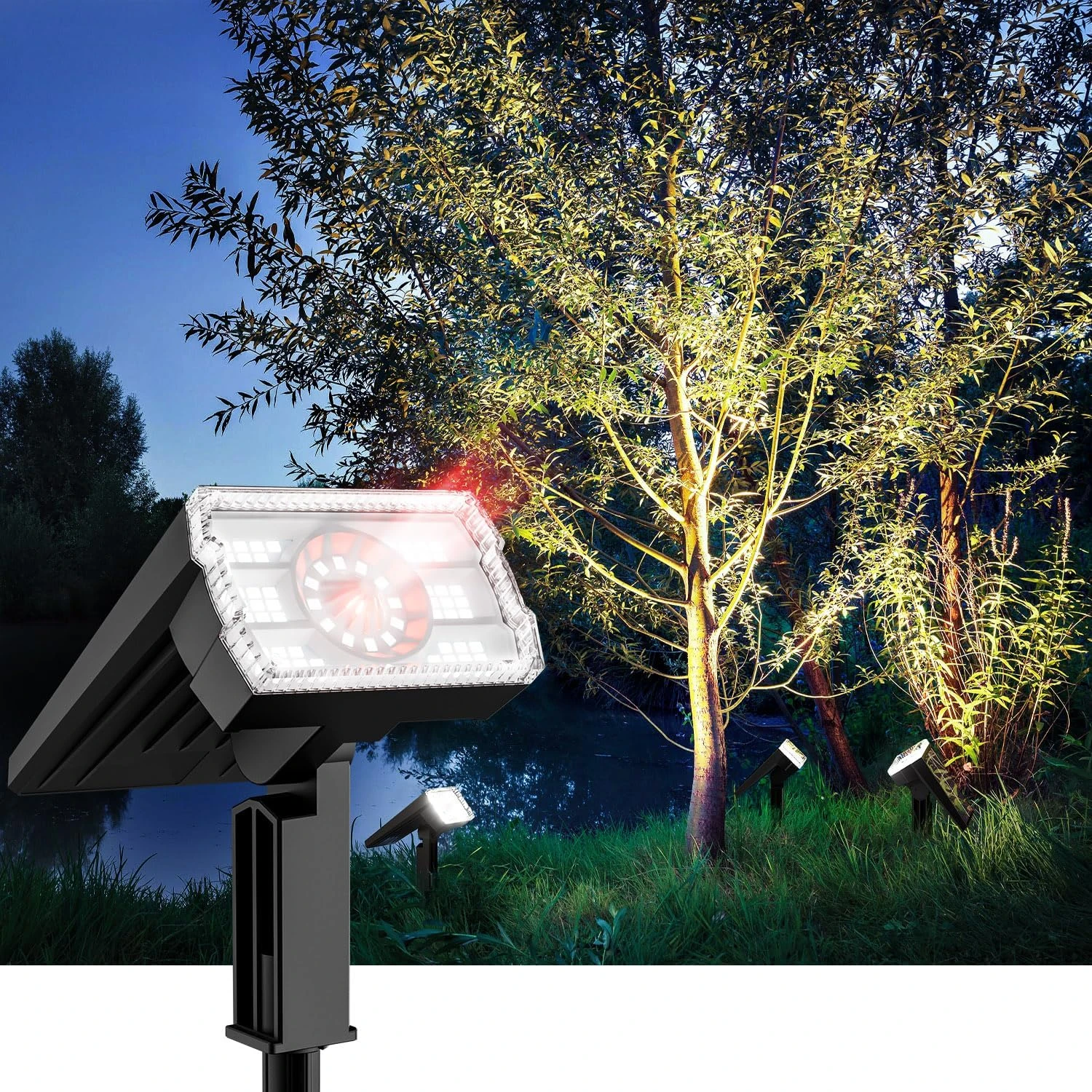Home security has entered a new era with the rise of smart technology. Solar spotlights stand out as a transformative addition, blending safety with sustainability. These devices illuminate outdoor spaces using energy harnessed from the sun, slashing nighttime power usage. Data from U.S. authorities suggests a potential 30% reduction in energy consumption, making them a compelling choice for modern households. This article delves into the mechanics, benefits, and real-world impact of solar spotlights in smart security systems.

Technical Principles of Solar Spotlights
Harnessing Solar Energy
Solar spotlights rely on photovoltaic cells to capture sunlight. These cells, often silicon-based, convert solar radiation into electricity through a process called the photovoltaic effect. During daylight hours, this electricity charges onboard batteries. At night, the stored power drives LED lights, casting bright beams across yards or entryways. The system requires no external power source, operating entirely on renewable energy.
Superiority Over Conventional Lights
Traditional security lighting pulls electricity from the grid, often using incandescent or halogen bulbs. Solar spotlights differ sharply. Their LEDs deliver high lumens with minimal wattage. Grid-independent operation eliminates utility costs after installation. Environmental impact shrinks as fossil fuel reliance drops. Durability also improves, with LEDs lasting years longer than older bulb types.
Energy Consumption Analysis
Nighttime Power Demands
Homes consume significant energy after dark, especially for lighting and security. Outdoor lights often stay on for hours, guarding against intrusions. Cameras, sensors, and alarms add to the load. In conventional setups, this constant draw spikes electricity bills and strains power grids.
Mechanisms of Energy Savings
Solar spotlights cut this burden in distinct ways. They source all power from daytime solar collection, bypassing the grid entirely. LED efficiency ensures maximum brightness from minimal energy. Motion sensors play a critical role, activating lights only when movement triggers them. Studies show idle time far exceeds active use in most homes, slashing wasted power. Together, these factors deliver substantial reductions.
Quantifying the Impact
A precise figure emerges from rigorous analysis: 30% less nighttime energy use. This isn’t a vague estimate but a measurable outcome tied to solar spotlight adoption. Efficiency compounds as systems scale, from single units to full-property coverage.

Case Study and Authoritative Reports
U.S. Department of Energy Findings
The U.S. Department of Energy (DOE) offers hard data in its 2022 report on residential energy trends. Homes with solar spotlights saw nighttime consumption drop by 30% on average. The study credits smart sensors for limiting light activation to essential moments. Battery advancements also ensure consistent performance, even on cloudy days. Over 500 households across diverse climates contributed to this dataset, lending it broad relevance.
National Renewable Energy Laboratory Insights
The National Renewable Energy Laboratory (NREL) bolsters these findings in its 2023 solar lighting analysis. Efficiency in photovoltaic cells has climbed, with modern panels converting over 20% of sunlight into usable power. Battery storage has evolved too, with lithium-ion units holding charges longer and degrading slower. NREL notes a 25% reduction in maintenance costs for solar-equipped homes, alongside energy savings. These gains stem from real-world deployments, not theoretical models.
Practical Example: California Deployment
A 2021 pilot in Sacramento, California, tracked 200 homes retrofitted with solar spotlights. Nighttime energy use fell by 32% within six months, per local utility records. Motion sensors reduced light-on time by 70% compared to fixed lighting. The DOE cited this case as a benchmark for national adoption, highlighting its scalability.
Benefits Beyond Energy Savings
Enhanced Security Features
Solar spotlights don’t just save power; they strengthen protection. Bright, targeted beams deter intruders more effectively than dim, constant lights. Motion activation adds an alert factor, signaling activity to homeowners or cameras. Integration with smart systems allows remote monitoring via apps, amplifying their utility.
Economic Payoff
Initial costs for solar spotlights range from $50 to $200 per unit, depending on features. Payback arrives fast. A typical home with four units recoups the investment in two years through energy savings, based on U.S. average electricity rates of 14 cents per kilowatt-hour. Longevity—up to 10 years for LEDs and batteries—extends this value further.
Environmental Edge
Fossil fuel reduction ties directly to solar adoption. A single spotlight offsets roughly 50 pounds of CO2 annually, per NREL estimates. Scaled across millions of homes, the climate impact grows massive. This aligns with U.S. goals to cut emissions 50% by 2030, as outlined in DOE policy papers.
Challenges and Solutions
Weather Variability
Cloudy regions pose a hurdle. Reduced sunlight limits charging. Modern batteries counter this, storing excess energy from sunny days. NREL data shows a 15% performance dip in overcast conditions, manageable with proper sizing.
Upfront Investment
Cost deters some buyers. Government incentives, like the federal solar tax credit, offset 26% of expenses through 2023. State programs in places like Texas or New York add rebates, easing the burden.
Installation Complexity
DIY setups work for basic models, but advanced systems need professionals. Manufacturers now offer plug-and-play designs, cutting labor costs. Online tutorials from DOE-backed sites simplify the process further.
Conclusion
Solar spotlights redefine smart security, merging efficiency with effectiveness. They slash nighttime energy use by 30%, as proven by DOE and NREL research. Homes gain brighter, smarter lighting without grid dependence. Economic and ecological wins pile up, from lower bills to cleaner air. Challenges like weather or cost fade against advancing technology and incentives. Looking ahead, wider adoption seems inevitable. Innovations in PV efficiency and battery life promise even greater savings. Solar spotlights aren’t just an upgrade—they’re a blueprint for sustainable living.


Leave a Reply